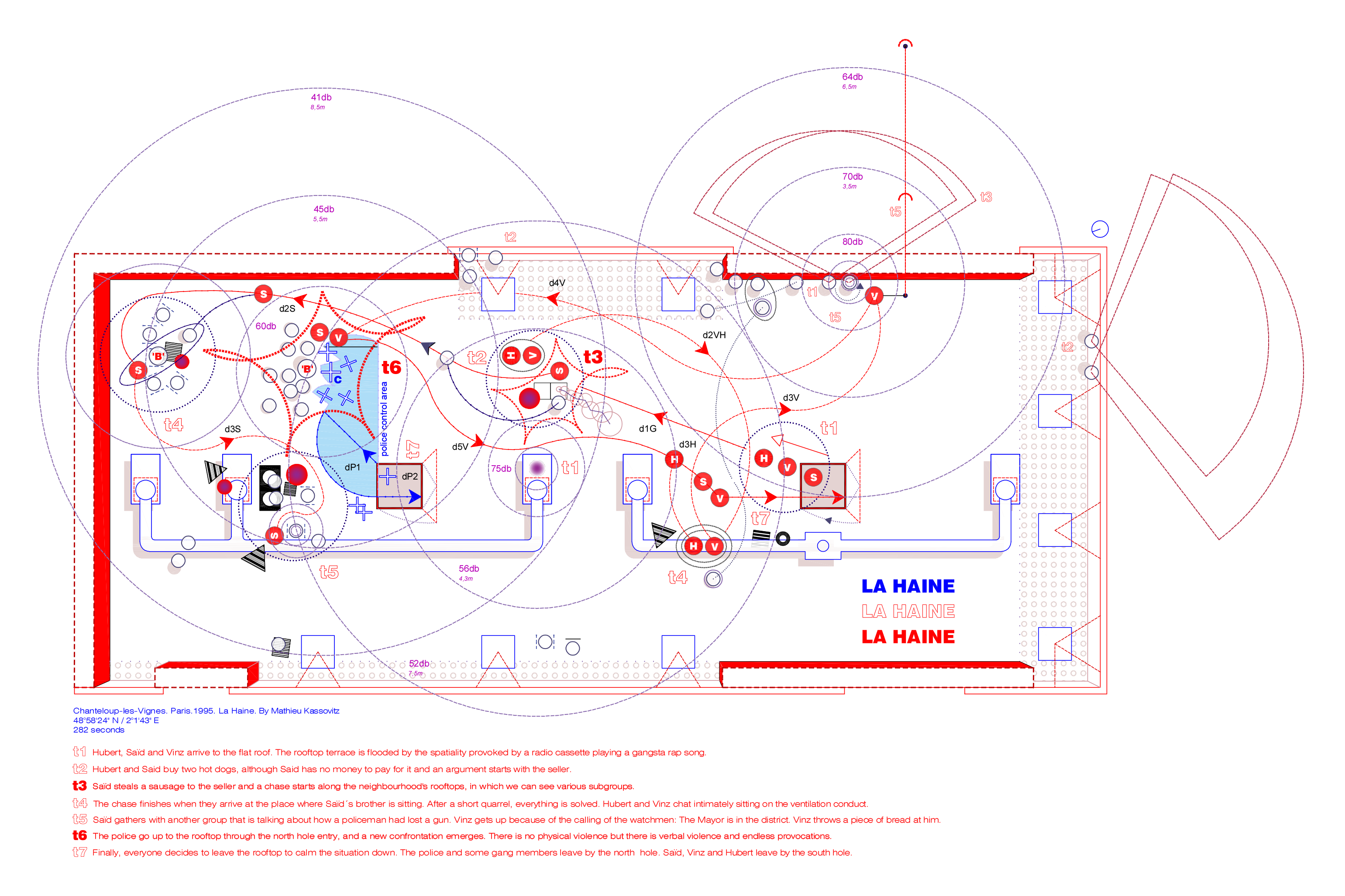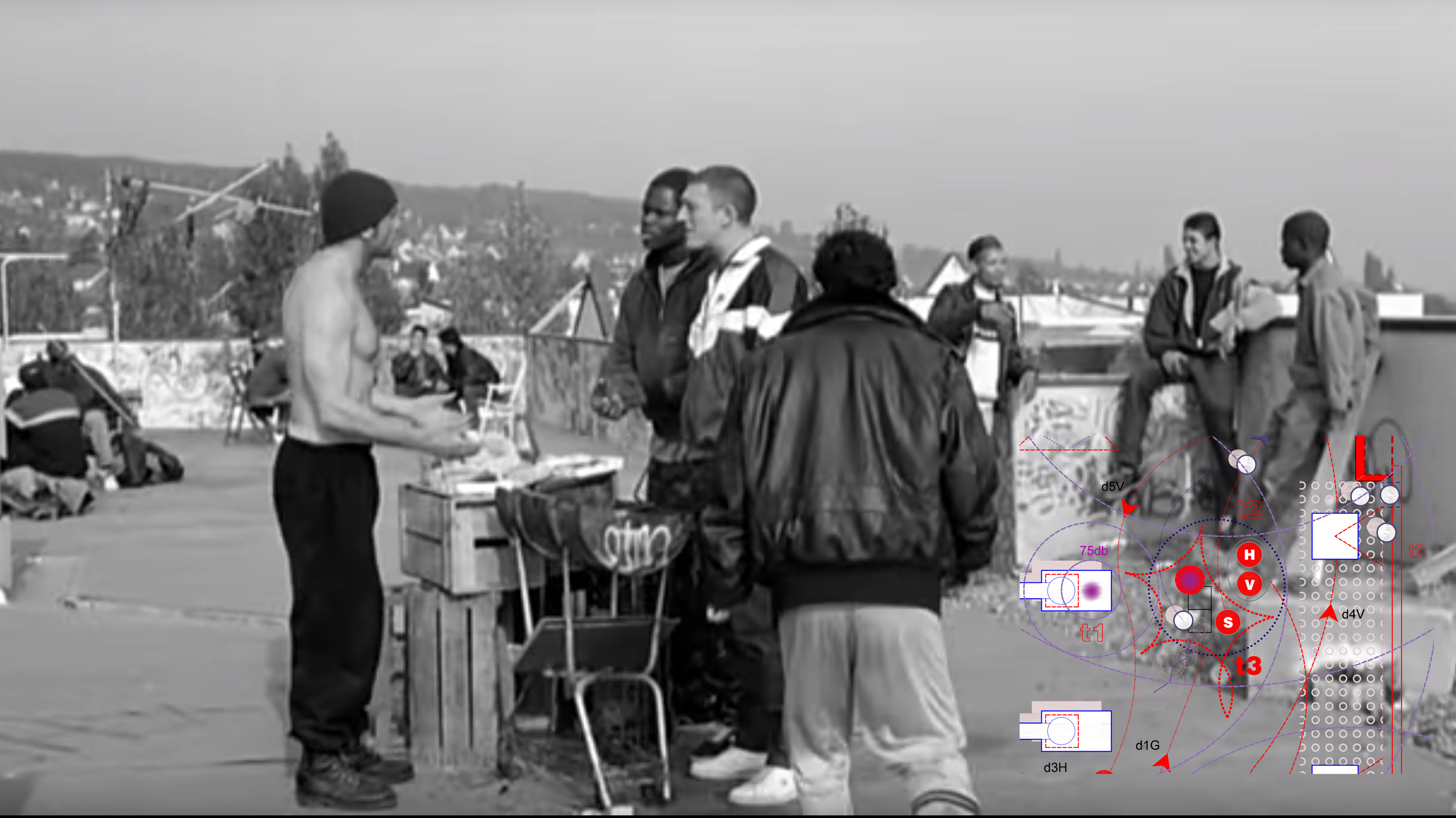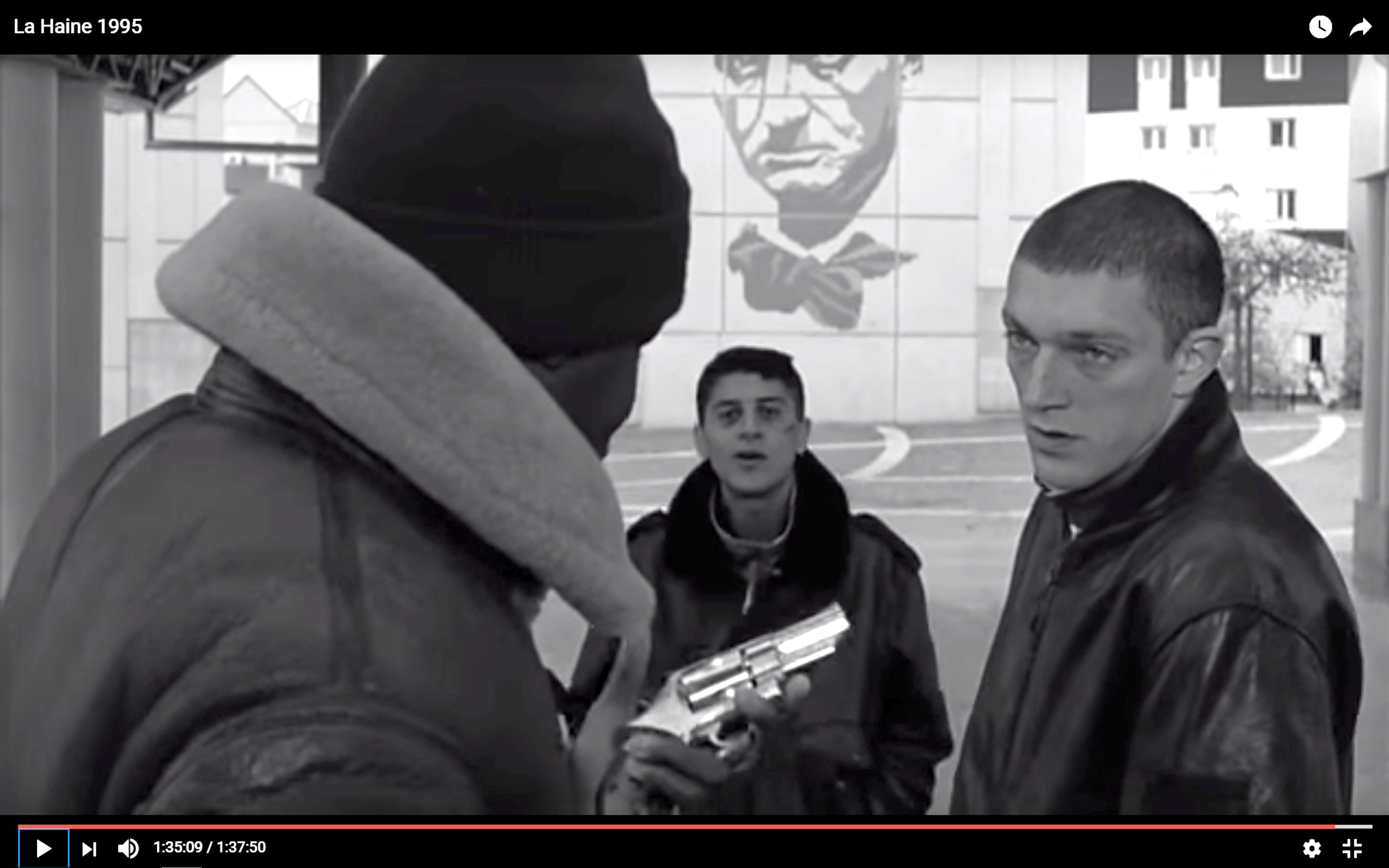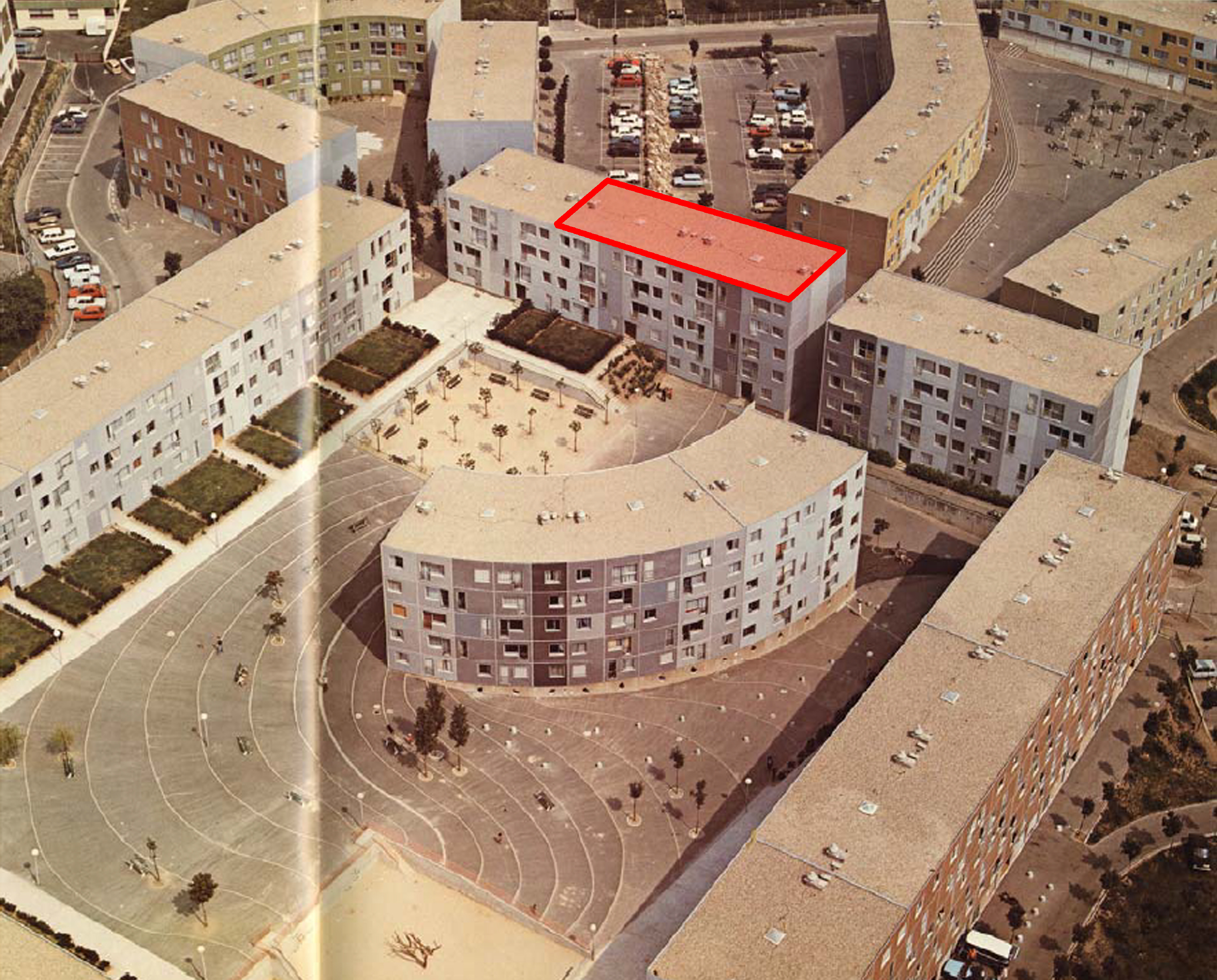
Researcher: Víctor Cano Ciborro
Site model: Chanteloup-les-Vigne <La Cité de la Noé> by Emile Aillaud
File: La Haine
Published at MONU 27
Lectured at International Congress UMIE ‘Urban marginality and Insitutional effects’. Catholic University of Urban Studies. Santiago de Chile (Chile). October 2017

In 1995 the film ‘La Haine’ –Hate–
directed by Mathieu Kassovitz was released. Kassovitz began writing the script
on the 6th April 1993 after the murder of young Zairean Makome
M’Bowole, who was shot in a police station in the eighteenth arrondissement of
Paris (1). The film exposed the banlieue’s situation in French society, and
anticipated the great burst of violence that broke out ten years later, on the
27th October 2005, at the Clichy-Sous-Bois district.


‘La Haine’ provides a spatial and conceptual framework within which to dismantle the urban utopias of modernity through its script. It shows an urbanism that transcends regulations, the search for harmonious composition of objects –housing blocks-, or the urban design understood as a ‘happy ending’ in order to focus on the actual reality of the inhabitants’ lives. Urban objecthood is pushed into the background in favour of corporeal actions occurring in small scale relations and based on skin-to-skin connections. Inhabitants re-signify their particular behavioural patterns through the variable geometry and multiple filiations of the bodies who inhabit a stage with which they do not identify. A suburban territory where the distance between the built environment and the real need of their inhabitants becomes apparent. In this way, and by means of ‘La Haine’, we introduce the concept of ‘Gang Urbanism’.


This peripheral urbanism is designed by subaltern bodies, but how is an idea of urbanism understood through bodies? It is an urbanism understood from relationships and actions. ‘[The fact that] things are bodies means that they are actions. The limit [to them] is the limit of their actions, and not the outline of their figure’ (2). Gang Urbanism is radically against any utopia and is focused on the peculiar and dissident actions and relations of the bodies that compose it.
Gang Urbanism moves between ‘what a body can do’: riots, illegal actions, drug trafficking, sex in public spaces, rooms without privacy; and ‘what a body feels’: sensations, emotions, eroticism and other elements that because of their immaterial and intangible nature, are discarded as potential spatializing concepts to take into account in urban design. It is an urbanism that cannot be planned, even if it were attempted.

(1) https://www.criterion.com/current/posts/642-la-haine-and-after-arts-politics-and-the-banlieue
(2) DELEUZE, Gilles. En medio de Spinoza. Buenos Aires: Cactus, 2008 p.380.